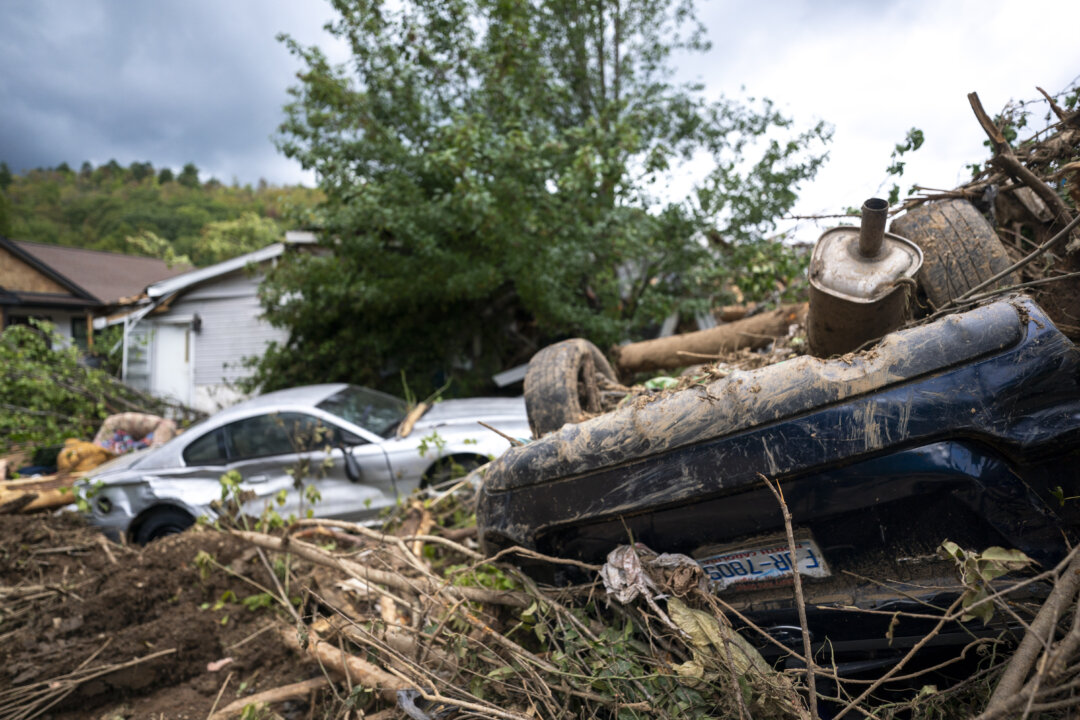The hurricane caused mass destruction across 10 states, with more than 160 deaths confirmed and billions of dollars in estimated damages.
Leaders of the Federal Emergency Management Administration (FEMA) said that their organization and partner federal agencies are preparing for a multiyear recovery effort after Helene.
“FEMA and many of our partners will remain there for many years to come,” said Frank Matranga, director of FEMA’s individual assistance program, during a media call on Oct. 1.
“By working together, we can strengthen our resources, better understand the needs of those who most need help, and use our combined expertise to help get families back home again.”
Matranga was joined by representatives of several federal and private recovery partners, including the Department of Agriculture and the American Red Cross.
Hurricane Helene caused mass destruction across 10 states, with more than 160 deaths confirmed and billions of dollars in estimated damages.
President Joe Biden designated 41 counties as major disaster areas across Florida, Georgia, Virginia, South Carolina, and North Carolina, including the land owned by the Eastern Band of Cherokee Indians.
More than 1 million people are still without power across Florida, Georgia, South Carolina, North Carolina, and Virginia as of Oct. 2. Hundreds of roads are still closed in western North Carolina.
The Department of Agriculture confirmed that 20,000 farmers under their crop insurance program were in the path of the storm. Corn, soybeans, cotton, peanuts, and orchards were the most significantly hit, and the program has roughly $7 billion in liability coverage.
“That’s only a portion of the impacts that we think agriculture will be hit by,” Department of Agriculture Undersecretary for Farm Production and Conservation Robert Bonney said during the press call.
“A Farm Service Agency is streamlining our programs, requiring less documentation from farmers, [and] removing some of the environmental requirements so that we can help farmers with livestock, orchards, uninsured crops, and other things.”
One example of an uninsured crop is timber. Others notably affected include citrus fruits in Florida, apples in North Carolina, and pecans in Georgia. Livestock were impacted significantly as well.
Bonney added that his department will work long-term with communities through the emergency watershed program to deal with the flooding.
Recovery efforts at the federal, state, and local levels have been underway for nearly one week. More than 150,000 households have applied for assistance and more than $2 million has been paid directly to disaster survivors, FEMA said earlier.
“More than 4,800 personnel from across the Federal workforce are deployed and supporting state-led response efforts across the region. FEMA and other agencies have more than 1,200 personnel in North Carolina, with more resources and staff arriving daily,” Matranga said.
In addition, more than 6,000 National Guard soldiers from 12 states have been activated, including nearly 4,000 in Florida and 700 in North Carolina.
On Wednesday, the Department of Defense announced the deployment of 1,000 active-duty soldiers to support the effort.
FEMA has shipped more than 8.5 million meals, more than 7 million liters of water, more than 220,000 tarps, and 150 generators.
The American Red Cross said it was housing more than 2,400 hurricane survivors in 75 shelters from Florida to North Carolina as of Sept. 30. While the overall number has decreased, North Carolina’s shelter population continues to increase. The Red Cross also has provided nearly 5,000 personnel and 90 emergency response vehicles.
“Our voluntary agency liaisons are working closely with voluntary agencies who are on the ground and impacted states to identify unmet needs, coordinate additional services, and begin supporting long-term recovery,” Matranga said.
“Partners like Samaritan’s Purse, Volunteer Florida, and Team Rubicon, to name a few, are clearing debris, serving hot meals, and getting essential supplies of food buckets and hygiene kits for the folks who need them most.”
President Joe Biden and Vice President Kamala Harris are visiting states devastated by Helene on Oct. 2. Biden is visiting North Carolina and South Carolina, and Harris is in Georgia.
Their visits follow former President Donald Trump’s visit to Valdosta, Georgia, on Sept. 30.

